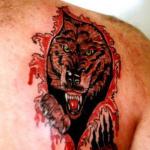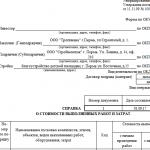We will send the material to you by e-mail
IN In conditions of limited space for a home craftsman, the best option is for a garage in a basic or extended configuration. There are a lot of manufacturers and modifications of equipment on the modern market. Therefore, below are recommendations from experts on choosing a mini-machine for metal turning.
Selection criteria, types
A metal lathe for a garage can save both the operating budget of a car, a household plot, and time. The search for small things that are necessary for repairs and construction often takes several days. If you have the equipment, you can do all this yourself. The main selection criteria are:
- purchase budget – most often the basic equipment is purchased, additional functionality is purchased later, as needed; if you have sufficient funds, it is better to choose a multifunctional (universal) machine right away;
- Dimensions are approximately the same for most manufacturers;
- quality - it is not recommended to buy such equipment to order; there is no better method for purchasing than a visual inspection or trial run;
- desktop - minimal functionality, some models do not include a tailstock;


- school - various configurations, 2 step speeds with smooth adjustments inside each of them, reverse, weight within 200 kg;

- screw-cutting lathes - minimal spindle runout, high price;

It is very difficult to focus on the size of the workpieces that can be clamped in the jaws of the chuck and placed between the centers of the headstocks. The needs of each craftsman are different; from time to time it is necessary to process large parts or perform jewelry operations.
Specifications
A tabletop garage metal lathe most often has the following performance characteristics:
- power button - may be absent (for example, in the Corvette-2 model), rotation is activated by a rheostat that regulates the speed
- Dimensions – length 1.2 – 1.7 m, width 0.5 – 0.6 m
- weight – within 120 – 200 kg
- workpiece diameter – 10 – 20 cm above the bed or 5 – 15 cm above the support
- center-to-center size RMC – 20 – 50 cm
- drive power – 0.15 – 0.6 kW

Desktop option
For a metal lathe for a garage, 220 V asynchronous or commutator motors are used. The designs of speed control systems and transmission of torque to the caliper shafts differ significantly from different companies. In some modifications, the reverse is switched by a lever, in others, to obtain reverse rotation you have to flip the transmission belt.

Most lathes only cut metric and imperial threads in one direction. Of the domestic manufacturers, the most popular are “Home Master”, “Craftsman”, “Caliber”. All other products, regardless of the brand’s homeland, are manufactured in China - “Optimum”, “Corvette”, “JET”, “Proma”, “DIY”.

For example, the Enkor company produces turning and milling modifications of the Corvette 407, lathes Corvette 401 - 403. Automatic caliper feed is used only for thread cutting; processing and roughening is carried out manually. The chuck is equipped with straight and reverse jaws; parts can be clamped without a chuck in the centers. The smallest of them (Corvette 401) is equipped with a 0.5 kW electric drive, 2,500 rpm, and an electronic system that allows you to maintain the same speed under any load. A through hole in the spindle allows processing 20 cm of parts.

Tabletop device for metal Corvette 401
Optimum machines are equipped with 0.5 - 1.5 kW motors, the RMC reaches 40 - 70 cm, the height of the centers is 7 - 14 cm. The homeland of the brand is Germany, 95% of production is concentrated in China. A special feature of the equipment is an error of 0.025 mm and 0.01 mm (displacement, spindle runout, respectively).

Table-top metal screw-cutting lathe from Optimum
Weiss table lathes have the lowest possible vibration and sound pressure. The spindle rotates in roller bearings; after the rotation stops, the possibility of automatic reverse to displace the caliper remains. The tailstock has longitudinal movement with fixation of its position in space.

Universal lathe for the garage produced by Weiss
Related article:
. In the publication we will look at step-by-step instructions for making the machine with photos and videos, a review of finished models, and safety precautions when working on the machine.
When purchasing a metal lathe for your garage, you should pay attention to the following points:
- manufacturer - products of domestic companies are easier to use, since there are more service centers, spare parts, and consumables in the Russian Federation;
- transmission type - belt or gear (the input shaft is always driven by a V-belt);
- gear material is preferable to caprolon, which, unlike conventional plastics, does not crumble, but self-reinforces;
- the presence of roller bearings on the spindle – ensures high-precision processing;
- type of guides - the service life of the hardened elements of the machine is an order of magnitude higher, as is the quality of processing;
- rpm - usually 0 - 1500 in 1st gear, 0 - 2500 in 2nd speed;
- the presence of several speeds - usually 1 or 2;
- protective devices - some models are equipped with plexiglass casings, which fade over time and crack, reducing visibility of the workpiece;
- headstock - preferably options with a through hole, allowing you to turn and cut threads on long parts.

Being an exact copy of a standard lathe, the benchtop equipment is designed for the production of one-piece parts. There are also restrictions on the dimensions of processed workpieces. Its main advantage is functionality in a compact size; it is successfully used in small workshops, car repair shops and by amateurs. The small device allows you to accurately process metal, is easy to use, and there is a place for it even in the tightest of spaces. CNC machines are designed to produce small batches of the same type of parts and are used in small businesses.
Classification of tabletop turning units
The main purpose of lathes is processing cylindrical and round parts. In the process of removing excess layers of metal from the surface of the workpiece, it is given the required shape. The process is called turning. If a cavity is selected inside the part, boring is performed.
Several modifications of lathes are used in industrial production:
- screw-cutting;
- revolver;
- multi-spindle;
- with CNC.
Mini machines for home belong to the universal (screw-cutting) type of equipment and are designed specifically for the production of piece products or small batches. Screw-cutting lathes are capable of performing a range of metalworking operations:
- turning and boring parts;
- end processing;
- development of through and blind holes;
- carving;
- making holes;
- turning of grooves and grooves;
- countersinking.
The functionality of the device can be expanded by purchasing additional accessories, the range of which is quite large.
Design and principle of operation

The design of the mini device is practically no different from its “large” counterpart. The complexity of the design is explained by the high requirements for the accuracy of the finished product and the qualities of the processed materials.
The main parts of the machine: bed and support. The bed is the basis for the remaining components. The support is designed to fix and move the cutter in a precisely designated direction.
Before starting the machine, the part is fixed on the front stand (headstock) in the spindle, which receives movement from the electric motor. The control devices and gearbox are also located here. The spindle is a cylinder-shaped part with very precise geometry. It has seating strips cut out for bearings. The latter are combined with counter grooves in the front pillar. The characteristics of the spindle are largely responsible for the processing accuracy. The caliper moves due to transmission devices and the stroke shaft.
When turning elongated workpieces, the second end is supported by a rear stand (headstock), where a center is provided for this purpose. Here you can fix a cutter (tap, drill) for boring the end. The rear rack is a cast structure that moves along the base guides. For movement, there is a handle installed in a certain position; it fixes the headstock at the desired point. The transverse position of the tailstock is adjusted with a screw, which is used when it is necessary to align centers (alignment) and turn cone-shaped workpieces. Vibration is eliminated using steady rests of various diameters.
The weight of a desktop device can be from 13 to 60 kg, with a power of about 500 W. For comparison, the power of a semi-professional machine is at least 1000 W. It can handle the production of small batches of parts quite well. The mini turning machine for home is connected to a 220 V power supply, it works very quietly.
The defining characteristics of a metalworking machine are the maximum diameter and length of the workpiece. The length is determined by the distance between centers. Typically, the diameter of the workpiece that can be turned on a tabletop lathe does not exceed 15 cm.
Part fastening devices

Depending on the shape of the workpiece, the following options for fixing it in the machine are used:
- faceplate - for fastening workpieces of complex configuration or large dimensions. The disadvantage of this method of fixation is the complexity of fastening and centering the workpiece relative to the axis;
- three- or four-jaw chuck - hardened and soft are distinguished;
- — convenient for fixing thin workpieces, for example, from a rod or clamping an already turned part;
- drill chuck - does not withstand radial stresses, but can clamp parts of various shapes and sizes.
Types of cutters for benchtop lathes
Metal turning on a machine is done using cutters. There are several groups and types of incisors:
- roughing - for rough processing of the workpiece;
- semi-finish - with their help you can bring the part to readiness with average requirements for quality and accuracy;
- finishing - these cutters are designed for fine work and final finishing; they remove the thinnest layer of metal.
The cutters also differ in the profile of the working edge. The most used ones are through-hole and boring. The first ones sharpen the external contours of a cylindrical or conical workpiece. The second ones are intended for sampling material from the inside. Threaded ones are designed for applying threads inside and outside the part. Cut-off cutters grind the end of the workpiece and cut off the finished part. They can also be used to apply transverse grooves.
Particularly complex shaped parts are cut out with shaped tools.
- processing of cylindrical surfaces is carried out with a through-type cutter;
- for reliable fixation in the machine, the end of the part is inserted into the chuck by 1 - 1.5 cm, the length of the finished product will be less than the workpiece by this amount, so the workpiece is taken with a margin;
- Grooving is performed at a low rotation speed, without pressing hard on the cutter.
What parameters to consider when choosing

Weight and dimensions. Initially, it is assumed that the machine should be quite compact. Especially if you plan to work at home or in the garage. If the machine weighs about 100 kg, it is quite difficult to choose a strong table or workbench for it. You will have to make a special stand, which will take up extra space.
Electrical network parameters. Most desktop machines are connected to 220 V networks, but it is worth further clarifying this indicator, because connecting a 380 V cable to the apartment is expensive and technically difficult.
Dimensions of processed parts. Experienced craftsmen select machines with a center-to-center distance of about 40 cm. This is enough for most amateur work.
Machine power. Should be between 500 - 750 W.
Electric motor type. Asynchronous electric motors are characterized by a longer operating life before the first repair.
Limbo. You should pay attention to the size of the dial divisions. The smaller they are, the more accurately the machine will work.
The speed of the machine and the presence of reverse. All benchtop lathes have the ability to adjust the speed, and this is understandable. The speed is selected depending on the type of metal and the nature of the processing. Some models are equipped with reverse - this is a convenient option that you can do without.
Possibility of additional equipment. We do not recommend investing in a highly specialized device. Many models come complete with various accessories that expand their capabilities. For others, you can choose the appropriate equipment. Often, by saving on the basic equipment, you can purchase additionally all the necessary accessories, ultimately getting a multifunctional device.
When purchasing a machine, do the following:
- check whether the moving parts of the machine are free from play;
- run the equipment in several modes;
- study turning accuracy as one of the most important selection parameters. If the machine is not accurate enough to begin with, it will be almost impossible or very expensive to correct the problem.
Review of popular models
Quantum D140X250 Vario
The machine from a well-known German manufacturer is distinguished by a rich set of equipment: a waste tray, spare gears, a protective casing, and a chuck box. Instructions are included in Russian. The engine power is 450 W, with a rotation speed of up to 2500 rpm and smooth speed control, electronic controller and reverse. Processes parts up to 25 cm long and 14 cm in diameter.
Proma SM-250E

A Czech-made machine with excellent functionality and high-quality implementation. Can perform most types of metal processing, including reaming and thread rolling. The device weighs only 23 kg and is convenient for transportation. 230 W motor with a rotation speed of no more than 2000 rpm. Works with parts up to 14 cm in diameter and up to 25 cm in length.
Profi-350
The product of Chinese craftsmen will not disappoint with its quality and functionality. The engine power is 350 V, the rotation speed is 3000 rpm, there is a reverse and a smooth change of speeds. It features high precision turning of parts. Works with workpieces with a diameter of up to 18 cm. It is complemented by many accessories that expand the capabilities of the device.
Corvette 400
Compact and inexpensive machine of domestic production. The electric motor power is 400 W and operates from a household electrical outlet with workpieces up to 18 cm long.
JET BD-3
An excellent device from a Swiss manufacturer. Power consumption is 150 V at spindle speeds up to 3800 rpm. Works with workpieces with a diameter of up to 10 cm and a length of up to 15 cm. Ensures professional precision in processing parts. It weighs only 13 kg, but thanks to the special design of the case, vibration is completely eliminated. The legs are rubberized, so the device does not slide on a smooth surface. The longitudinal feed of the tool is carried out automatically.
Home lathes are smaller copies of industrial equipment and are designed to perform simple tasks. Using desktop mini-machines, you can perform the following operations:
 Mini metal lathe Proxxon FD 150/E
Mini metal lathe Proxxon FD 150/E - trimming ends;
- thread cutting;
- countersinking;
- grooving of cylindrical and conical surfaces;
- turning of grooves and grooves;
- trimming parts.
Mini-turning machines for home are divided according to functionality and types of operations performed:
- screw-cutting, for example, Caliber STMN-550/35;
- milling, for example, a TV-4 school machine.
The screw-cutting micro-lathe unit is equipped with a drill chuck, with which you can:

- grind all kinds of details;
- make grooves and various recesses;
- trim the edges of the workpieces.
A screw cutting machine can process non-ferrous and ferrous metals.
The milling unit performs the following types of work:
- cutting grooves, both straight and curved;
- chamfering;
- drilling various holes;
- thread cutting.
This micro-lathe allows you to work not only with metals, but also with plastic and wooden parts. This is a more functional option for the home; versatility is ensured by the vertical milling part.
Description of the design of turning units
The design of desktop lathes for home use is slightly different from industrial prototypes. Some spare parts are smaller.
 School machine TV-4 - drawing
School machine TV-4 - drawing The TV-4 and TV-9 school machines have the most traditional design; the main elements are:

A small tabletop metal lathe, for example, Caliber SMT-400, can weigh 50 kg, while the power reaches 500 W.
Bench lathes
The most common models of desktop units for the home:

Micro lathe Proma DSO-1000 – Czech model. Characteristics:
- power – 0.4 kW;
- power supply – 220 V;
- maximum part length – 100 cm;
- maximum diameter of the processed product – 35 cm;
- weight – 35 kg;
- speed – up to 1250 rpm;
- number of speeds – 4;
- cost – 13,500 rubles.
Its main disadvantage is its ineffective work with hard metals; it is more suitable for processing lead, copper, and tin products. It is difficult to find spare parts - you only need original ones.

Metal lathe Caliber SMT-400 made in Russia. Characteristics:
- power – 0.55 kW;
- power supply – 220 V;
- weight – 45 kg;
- speed – up to 2500 rpm;
- cost – 22,500 rubles.
The Caliber machine is a screw machine and can perform all basic turning operations. The gauge shows good results in machining parts made of hard metals. It is easy to find spare parts in case of breakdown.
 Profi-350 - metal cutting machine: made in China
Profi-350 - metal cutting machine: made in China Profi-350 (China). Main characteristics:
- power – 300 W;
- power supply – 220 V;
- maximum part length – 35 cm;
- weight – 54 kg;
- speed – up to 3000 rpm;
- cost – 23,000 rubles.
This unit has a large mass, but thanks to it, stability and more accurate turning work are ensured. In the event of a breakdown, spare parts for it must be ordered from the manufacturer and wait about two weeks.
Models of lathes for the garage
Metal lathe for home BD-9G JET
For the garage, you can choose not only tabletop options, but also units with their own base, for example, TV-4 is a school machine. It provides training in schools and vocational schools. Characteristics:
 The TV-7 screw-cutting lathe is perfect for working in the garage
The TV-7 screw-cutting lathe is perfect for working in the garage - power – 1 kW;
- power supply – 220 V;
- maximum diameter of the processed product – 20 cm;
- weight – 280 kg;
- speed – up to 710 rpm;
- cost – 25,000 rubles.
More powerful, but also larger models have been developed - this is not a school machine, but rather professional equipment:
- TV-6;
- TV-7;
- TV-9.
A Weiss metal lathe (China) is suitable for a garage:
- power – 6 kW;
- power supply – 220 V;
- maximum part length – 30 cm;
- maximum diameter of the processed product – 18 cm;
- weight – 60 kg;
- cost – 67,800 rubles.
Description and dimensions of mini-machines
Modern manufacturers strive to develop the most compact and silent models. Among these are:
Mini-machine JED BD-3. Characteristics:
 JET BD-3 at factory price - 22,000 rubles
JET BD-3 at factory price - 22,000 rubles - power – 150 W;
- maximum part length – 15 cm;
- maximum diameter of the processed product – 10 cm;
- dimensions – 270*440*210 mm;
- weight – 13 kg;
- speed – up to 3800 rpm;
- cost – 39,600 rubles.

Characteristics:
- power – 230 W;
- diameter of the processed product – 14 cm;
- dimensions – 270*300*540 mm;
- weight – 23 kg;
- speed – up to 2000 rpm;
- cost – 63,000 rubles.
Mini installation Quantum D140x250 Vario

- power – 450 W;
- maximum part length – 25 cm;
- maximum diameter of the processed product – 14 cm;
- dimensions – 250*320*560 mm;
- weight – 22 kg;
- speed – up to 3000 rpm;
- cost – 93,000 rubles.
Mini-machine Caliber STM-250:
- power – 250 W;
- maximum part length – 25 cm;
- maximum diameter of the processed product – 18 cm;
- dimensions – 350*325*760 mm;
- weight – 40 kg;
- speed – up to 3500 rpm;
- the cost of the Caliber lathe is 41,900 rubles.
Lathe for home – how to choose?

In order to purchase a high-quality device that will serve for a long time, you need to pay attention not only to technical characteristics, but also to specialization. Select according to what work you plan to do on it.
More powerful models save time on processing the product, but also consume more electricity.
The weight of the unit plays an important role. Lighter models may be less stable and may not be able to handle difficult jobs.
The asynchronous motor type is characterized by a longer service life.
Dimensions are important when work space is limited, so it is better to choose mini machines. If the area of the house allows, then it is better to give preference to larger options, for example, the domestic Caliber models - they are stable and allow processing with longer lengths.
It is better to give preference to models that can be upgraded and expand their functionality.
When purchasing foreign-made units, you need to take into account the possibility of repairs, find out whether spare parts are available for free sale, and the presence of a service center in the city.
Video: How to choose a tabletop metal lathe
Choosing a lathe is a purely individual matter. When choosing it, you must first take into account the purpose in production. The dimensions and weight of the machine itself depend on the number of operations that are supposed to be performed on it, the size of the workpieces in diameter and length. When choosing a machine for large batches of production of the same type of parts, it is better to choose a CNC machine with a multi-spindle head if the part needs to be processed with several cutters at once.
General view of a screw-cutting lathe with digital display
Universal machines with the ability to process one or more cutters at the same time are classified as light and medium-weight machines. When choosing a lathe for an enterprise equipment repair shop or a fleet garage, it is better to opt for universal metal cutting equipment with manual or semi-automatic control. When producing parts from rods, it is necessary to measure the diameter of the spindle hole with the diameter required for the production of rod parts.
To choose a reliable lathe, you need to pay attention to the material and method of fastening the guides of the bed; it serves not only as a box for attaching headstocks, a guitar, an apron, but its transverse guides serve to move mechanisms directly involved in the work process along them. The more reliable, massive and stable the frame, the less vibration and the higher the accuracy of the machine.
Video on machine selection
When working on metal, the machine guides experience heavy loads, so the bed must be made of very durable metal, mainly cast iron. Fastening the guides to the vertical posts can be done using bolting or welding. This does not have a big impact on the rigidity of the structure, but the bolted connection will have to be checked more often.
In the organization of the workplace, cabinets play an important role, but their main purpose is to ensure that the bed rests on them without distortions, which can lead to subsequent defective products. For short machines up to 1 ton weighing pedestals there can be 2. For longer and wider lathes that process metal, there can be 3 or 4 pedestals.
Not all automotive workshops need large universal machines. For example, in a tire shop for turning bolts and nuts for attaching disks to car hubs, a tabletop machine may well satisfy the needs of a workshop for cutting metal threads or turning new ones to replace worn parts.
Choosing a benchtop lathe
Home craftsmen and car enthusiasts who independently manufacture metal parts are more interested in a tabletop machine that can be used at home, in the garage or elsewhere, because it is easy to transport. It should be noted that on the turning equipment market, among desktop machines, there are machines weighing about 200 kg and costing about $4,000. It is unlikely that it would be advisable to install this metal cutting machine in a home workshop or garage. First of all, when choosing a tabletop machine, you need to pay attention to such characteristics as:
- connection method;
- required network voltage;
- diameter and length of the workpiece that can be processed on this machine.
It is mandatory to check for any play in the quill and other moving parts.
For home use, as well as for a repair shop, you need a universal metal machine. Narrow specialization of home equipment is not very effective; you can never know in advance what kind of metal work will be required in the process of repairing plumbing, home heating systems or household appliances.
The versatility of the machine does not depend on its appearance, but on the number of possible independent upgrades using special turning accessories, regardless of whether they are included with the machine or can be purchased separately.
A machine equipped with all sorts of accessories will cost more, but it is not a fact that all the gadgets will be needed for the job. It’s easier to buy a cheaper model with the ability to independently equip it with the necessary devices that will be useful for performing certain metal operations.
The main thing when choosing any lathe is to make sure:
- that at all speeds declared by the manufacturer, it works flawlessly, without interruptions;
- make sure there are no backlashes in all moving parts;
- accuracy in completing assigned tasks, which is directly related to the first two.

Purchasing a machine that is obviously inaccurate in the hope of improving it yourself is not the best solution. It is difficult to look for a tabletop machine made in Russia or European countries. According to orders from our companies, table-top machines are most often assembled in China, which does not make them any worse. Domestic assembly of machine tools concerns more industrial turning equipment.
Industrial turning equipment has a wide range in weight, specialization and other parameters. How to choose it correctly is determined by each production technologist himself. The general requirements are the necessary accuracy of turning equipment and productivity.
A desktop one is a good model for a home, garage or small workshop, because the functionality of such a device allows it to be used effectively to perform a large list of technological operations. In fact, this is a miniature copy of the factory model, differing from it only in slightly limited technical capabilities.
Features and benefits of tabletop machines
A mini lathe, which is logical, is specially designed to process small-sized products. As with any turning equipment, a small machine can perform various technological operations on metal: turning cylindrical and conical parts, trimming their ends, grinding, drilling, reaming holes, cutting external and internal threads, etc.
Despite the fact that processing on such units is carried out at a much lower speed than on full-size devices, the quality of the finished products does not suffer at all from this. Their quality will be especially high if the mini-lathe is controlled by a CNC system.
Small models for metal, which are very easy to operate, are used not only to equip home workshops, where with their help it becomes possible to produce many products or bring the quality of finished ones to the required level. Small workshops and vehicle repair shops are no less successfully equipped with such units. Since the times of the USSR, schools and technical educational institutions have been equipped with similar machines, where with their help young people were taught the basics of the turner profession.
Among the advantages that a small-sized lathe has, the most significant are:
- use of a household electrical network with a voltage of 220 V to power such a machine;
- the ability to adapt such a device in order to connect it to a three-phase network;
- low power consumption;
- reliability, which allows such a micro-lathe to be successfully operated, subject to proper maintenance, for decades;
- affordable cost (many people can afford to purchase such equipment);
- compact dimensions and light weight, which makes it possible to install it even in a cramped workshop or garage;
- the opportunity to learn how to operate such a device in a short period of time, while the operation and maintenance of the machine will not cause any particular difficulties even for a novice turner.
Among desktop lathes there is a category of extremely compact models, which are commonly called mini-machines. The video below provides an overview of one of these portable machines.
An important advantage of such equipment is that it can be additionally equipped with various devices, which makes it possible to effectively use tools for milling and complex drilling of workpieces. With the help of such a simple modification, you now have at your disposal a desktop device, that is, universal equipment characterized by wide functionality.
Any desktop lathe, regardless of the model, can be characterized by several basic parameters. These include:
- the mass of the device, which is measured in kilograms;
- power, measured in kilowatts;
- speed, expressed as the number of revolutions per unit of time at which its spindle rotates;
- height of the centers (expressed in millimeters);
- the maximum length and diameter of the workpiece (in mm) that can be processed on such a unit;
- the number of speeds that the device drive can provide (as a rule, a tabletop lathe has no more than six such speeds);
- the diameter of the hole in the spindle assembly (measured in millimeters).

One of the representatives of compact tabletop machines
Lathe units, which are classified as small, can have a mass from 40 to 280 kg; accordingly, their overall dimensions also vary. To equip a home workshop, it is recommended to choose devices with a minimum weight: up to 50 kg, which are convenient to install and can even be carried if the need arises. Heavier equipment, even if it is desktop, already falls into the category of semi-professional.
The power of small lathes usually does not exceed 2.25 kW. Some types of machines for the home, classified as low-power, are equipped with a drive whose power is 0.15 kW. Paying attention to this parameter of the machine, you should decide in advance for processing parts from what materials and with what dimensions you are going to use it. It is important to do this not only in order to initially select a household machine of the required power, but also in order not to overpay extra money for a unit that will not be used to its full potential.

Even with small overall dimensions, a lathe for a garage or home workshop does not cease to be a complex technical device, the quality of its components directly determines the accuracy of processing, as well as the reliability and durability of the equipment. The build quality of such components, as well as the material from which they are made, is also of great importance. The last two parameters are especially important for the following structural elements of the turning unit:
- machine support, which is responsible for the reliability and accuracy of fastening the cutting tool, as well as for its movement during processing;
- bed - a supporting element on which all components and mechanisms of the machine are placed and fixed.
The metal from which these structural elements are made must be exceptionally durable and have a carefully polished surface. Only if these important conditions are met can you count on the fact that your household machine will last for many years without losing its original characteristics. When choosing a home turning device for metal work, you should also take into account the frequency of its use, which determines the wear rate of its components.
On the domestic market, tabletop lathes are presented in a wide range of models and brands. It is very easy to get confused with such a variety of options, so to help you make the right choice, we will look at some models of metal lathes from the most popular manufacturers.
JET brand machines
It is no coincidence that tabletop lathes, which have been produced by the Swiss company JET for more than 50 years, have gained enormous popularity among home craftsmen and owners of small businesses. Even though some of the components of these machines have recently been produced in Chinese factories, their quality remains impeccable. Providing high quality, precision and processing efficiency, these units do not cause problems during operation and are easy to maintain.
The most popular models of machines of this brand include the following.
BD-3 is a miniature machine that can be used equally successfully by both amateurs and professionals. The frame of such a device is made of cast iron, which significantly reduces vibration during its operation. The machine guides, which can be adjusted according to the transverse slide, are carefully polished, this ensures precise movement along them. The equipment is equipped with a low-power (0.15 kW) but very efficient motor, which reduces energy consumption. The spindle of such a miniature unit can rotate in the range of 100–3800 rpm. The manufacturer has even provided for the possibility of independent servicing of the equipment, for which the standard kit includes an additional tool holder and a three-jaw chuck with a working section of 50 mm.

JET BD-3 machine, costs from 42,000 rubles
BD-7 is a machine for home or small business, distinguished by a number of remarkable design features: a massive cast-iron frame that reduces vibration of the unit, two spindle speed ranges, the data of which is reflected on a digital indicator, and the spindle itself, equipped with roller-type bearings. This metal cutting machine is very reliable. The tailstock of this model can be adjusted, which makes it possible to use it for processing conical surfaces. Due to the presence of a reverse mechanism, the workpiece on such a unit can be fed in two directions. With such a device it will be possible to cut threads, since its spindle can rotate in different directions. Compared to the previous model, this machine has more power; it has a 0.37 kW electric motor.

JET BD-7 machine, costs about 80 thousand rubles
BD-8A is a table-top machine in which longitudinal and transverse feed are automated. This machine can be quickly rearranged and is also equipped with a reversible mechanism that allows it to be used for thread cutting. Four tools can be installed simultaneously in the unit holder, and its thrust center is made according to a non-rotating pattern. The three-jaw chuck of the machine with a working diameter of 100 mm is protected by a special screen, which increases operator safety. This machine is driven by an electric motor with a power of 0.55 kW.

JET BD-8A machine, price from 170,000 rubles
The JET company also produces more powerful machines, which are often purchased not for home use, but for equipping small workshops. Such equipment, in particular, includes BD-9G, BD-920W, BD-11W.
Equipment from other manufacturers
The products of the Czech company PROMA, which has been producing similar equipment for more than 20 years, have proven themselves to be excellent on the domestic market. Among the variety of lathes and screw-cutting lathes for home or small enterprises that this company produces, the following devices should be noted.
- The SM-250E is a true micro lathe, weighing only 23 kg. With its modest dimensions, such a unit boasts excellent technical characteristics. It is this machine that is best installed at home if you are going to perform metal turning work at an amateur level. What is important is that, due to the high reliability of its design, such a miniature machine practically does not require special maintenance throughout the entire warranty period.
- SK-400 is a universal unit whose weight is already 120 kg. This machine, with which you can perform a full range of metal turning and drilling workpieces, is mainly used to equip vehicle service stations.
- SPA-500 is a semi-professional model, which can often be found not only in small workshops, but also in repair shops of manufacturing enterprises.

PROMA SPA-500, cost about 130,000 rubles
A number of other models of machines produced under this brand are deservedly popular: SPA-500P, SK-550, SPB-400/400, SPA-700P.
Domestic lathes for metal work are also presented on the modern market; they can often be found in educational and home workshops. Using such devices, which are easy to operate and maintain, you can quickly learn the basics of the turning profession. Among the models of miniature lathes produced by domestic manufacturers, one can note TV-6, TV-9, TV-16.
In addition, to equip a home workshop or small business, you can pay attention to lathes from the following manufacturers.
- OPTIMUM is a German brand that produces lathes, including miniature ones, which are well known and appreciated by specialists throughout Europe. The most famous models of machines for metal work of this brand, on which a CNC system can be installed, are D140x250, D210x400, D250x550.
- Chinese company Weiss Machinery, which produces inexpensive but high-quality, reliable and functional turning equipment. The most popular models, which are known in many countries around the world, are: WM-180V, WM-250V, WM-250G, WMP-300A, ML-200.

Tabletop CNC machines
Any metal lathe controlled by a CNC system is capable of performing all the same technological operations as a manually controlled unit. But such a machine does it much faster and more accurately, and it is very important that the correctness of the processing process is not negatively influenced by the human factor, and this practically eliminates errors.
Due to control using a computer program, such machines quickly change tools, and the accuracy of all technological operations is constantly monitored. Carrying out high-quality processing, such machines operate almost independently, requiring minimal human intervention to control them, which has the best effect on the quality of work performed.


















